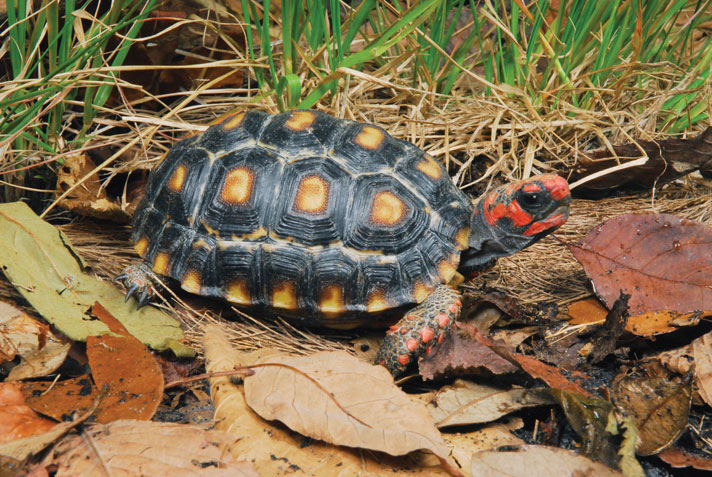A red-footed tortoise living in a dry climate needs plenty of hydration.
Question: How often should I let my red-footed tortoise soak in a shallow water pan? She climbs in every time I put the pan in her outdoor pen, which I do about twice a week for a couple hours. She rushes over so fast, that I wonder if she wants to drink more often. I thought tortoises were good at storing water. What do you recommend?
Nan Kelly, Searchlight, Nev.

bill love
Red-footed tortoises come from the humid savannahs and forest edges of most of northern South America, where moisture is not hard to find.
Answer: Red-footed tortoises are from the humid savannahs and forest edges of most of northern South America, where moisture and shade are not difficult to find. I noticed that you live in a very dry place, in the arid desert near Las Vegas. That’s very “un-redfoot-like” country! Your tortoise is probably a little dehydrated between soak days and eager to get in the water by the time you offer it.
Read More
Red-Footed Tortoise Care Sheet
Keeping and Breeding Red-Footed Tortoises
You didn’t describe the pen in your yard. Hopefully, it’s located in an area that provides some permanent shade at all hours of the day. At the very least, you should provide a shaded retreat where your redfoot can hide from the sun. Temps for about two-thirds of the year in the area where you live would be merciless on a creature that’s adapted to living in a wetter, more tropical habitat.
In addition to providing your redfoot with a dark shelter, I suggest digging out the area below the shaded retreat and dumping in several bags of topsoil and wood mulch, so your tortoise can burrow down into it. The ideal situation would be to allow an outdoor water spigot to drip very slowly into this soil and mulch mixture so that it retains moisture (within reason, as you don’t want to waste water or flood the area). This combination would make its environment much more comfortable for your redfoot.
In you choose to keep additional tortoises in the future, you might want to consider species that naturally inhabit drier climates such as where you live. Some species to consider would be Greek, Hermans’, leopard, and sulcata tortoises (though the latter come with some additional concerns, including the fact that they can get very large). Friends keep and breed these types with excellent results near me in the Phoenix area, so I’m sure they’d do well for you just a couple hundred miles to the north, too.


